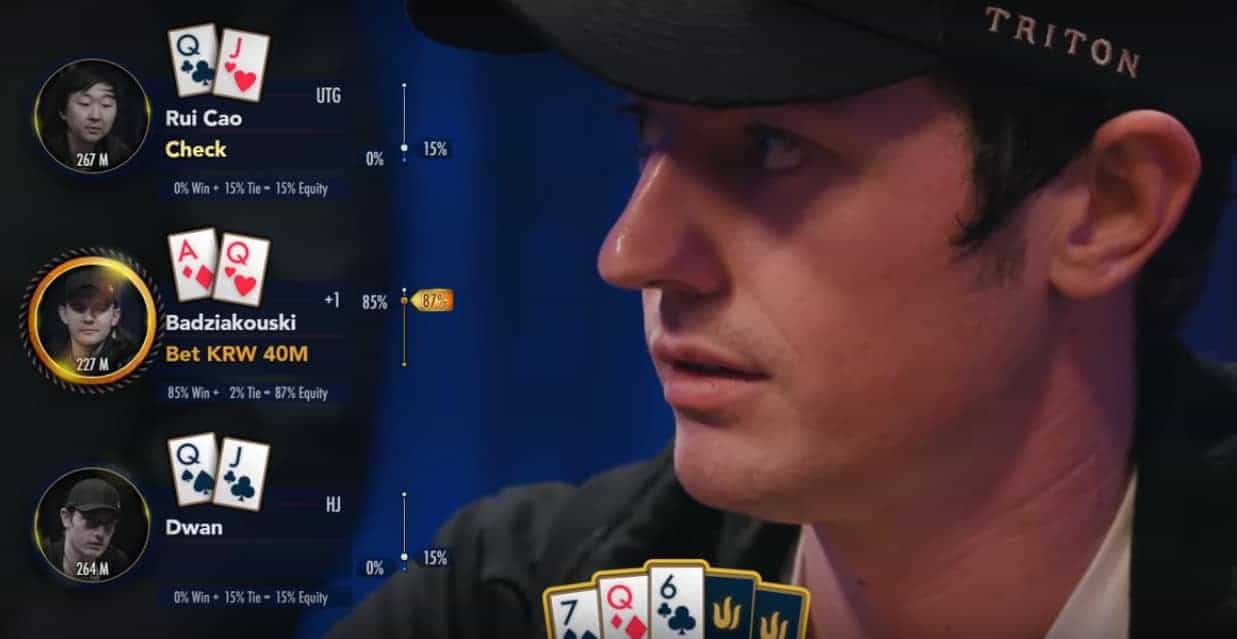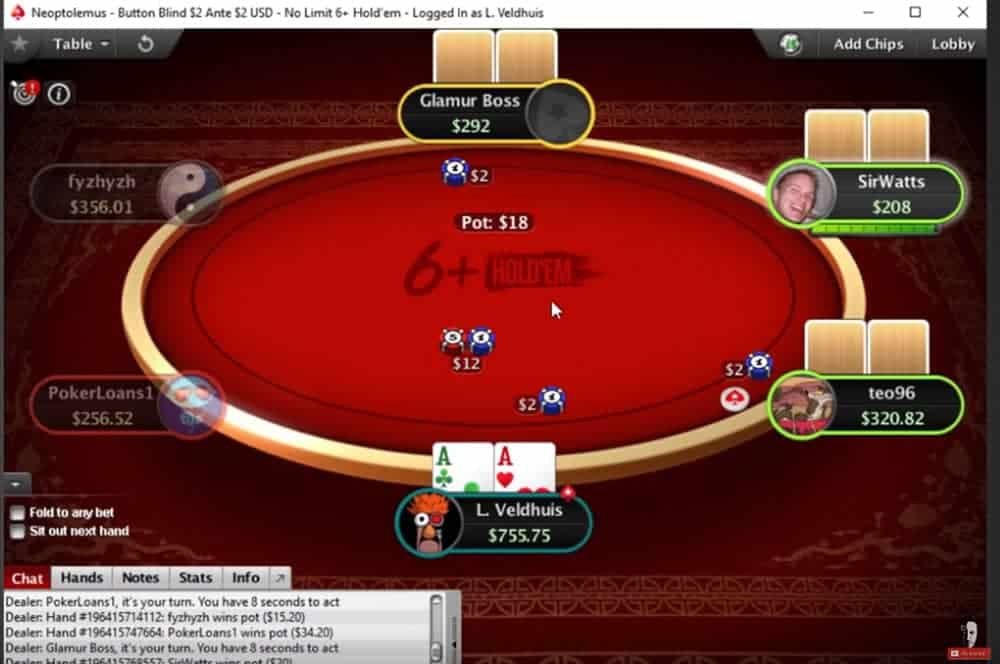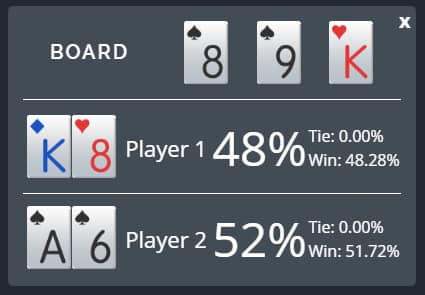Short Deck Poker Rules: The Only Six Plus Holdem Strategy Guide You Need

No-Limit Texas Hold’em is, by far, the most popular poker format played by professionals and recreational players alike. And, while this isn’t to change any time soon, Short Deck Hold’em is taking a bigger and bigger part of the poker economy every single day.
Often called Six Plus Hold’em as well, this new variation owes its popularity to the highest stakes games played by top pros that are available on YouTube.
Similar to full deck poker in many aspects, yet more fast-paced and action-packed, Shot Deck Hold’em poker is booming lately.
You may be thinking that you’ll never get a chance to play in those games, so why would you care? It’s because there is a growing number of online poker sites featuring Six Plus tables as well.
With the game being rather new and resources still somewhat scarce, the time is right to learn Short Deck poker rules and strategies to take advantage of newcomers.
Short Deck Poker Rules
Let’s start at the top. If you’re completely new to the game and have only seen it played a few times, you first need to get the grasp of the Short Deck poker rules.
In terms of gameplay, this variation doesn’t differ too much from the full deck Hold’em, so it shouldn’t be too hard to learn.
However, there are a few key differences you need to be aware of in Six Plus Hold’em
- The game is played with a “shortened” deck (2s, 3s, 4s, and 5s are removed)
- Aces are high and low (e., A 6 7 8 9 plays as a straight, as well as T J Q K A)
- Flushes beat full houses (more on that later)
So, the game is played with a deck containing only 36 cards, which influences your preflop and postflop strategies quite a bit, but for now, let’s stick to Six Plus Hold’em poker rules.
The Deal & Gameplay

The biggest difference between most full deck games and Short Deck ones is in the betting structure. While No-Limit Hold’em is played with blinds, Six Plus is mostly played using antes.
In classic Hold’em, you’d have two players post a small and big blind, before the hand starts. In Short Deck, this changes:
- Everybody at the table post one ante
- The player on the button post additional ante (two antes in total)
Once all antes are in, every player is dealt two cards, face down, so nothing changes here. The action begins with the first player to the left of the button and continues clockwise.
This is true before the flop and after the flop alike, so there are no changing dynamics. The player on the button gets to act last on all streets.
Hand Rankings
There aren’t many differences between Short Deck Hold’em hand rankings and the ones found in the full deck format.
The biggest difference is that flushes beat full houses, which makes suited cards, especially suited aces, much more powerful.
In some variations, three of a kind (trips) beat straights. This rule was used more in earlier versions of the game. These days, especially online, you won’t find many tables where this applies.
So, for this guide, I’ll focus on typical Six Plus Hold’em where straights beat three of a kind.
Everything else stays the same in terms of hand rankings. Straight flushes still beat quads, quads beat flushes, etc. So, you don’t have to learn a whole new rankings table to play.
Just remember that flushes are stronger than full houses, and you’re good to go.
Short Deck Hold’em Poker Strategy: Preflop Play
Just looking at the rules of the game, it seems it isn’t all that different from standard Texas Hold’em. This may seem true on the surface, but Short Deck poker requires a completely different strategic approach.
Many players trying the game out won’t be aware of this, which is why I believe this is the right time to learn and make money with it.
Like every other game of this format, 6+ Hold’em begins with preflop poker hands selection. Knowing how to choose your starting hands correctly will go a long way towards making you a winning player.
What is different, though, is how you approach your selection of hands. The first thing you need to understand and remember is that hand equities run much, much closer in Short Deck.
This means there are fewer true preflop premiums. The best players out there agree that only real premium hands are:
- AA
- KK
- AKs
- AQs (marginally)
The hands like pocket Queens, pocket Jacks, or even AKo aren’t nearly as powerful in Short Deck. So make sure not to take your marginal hands too far.
At the same time, suited and connected hands go up in value. The reason for suited hands is obvious, as flushes are very strong. Your connectors are also powerful because it will make many more straights as there are fewer cards in the deck.
Understanding Preflop Equities In Six Plus Poker
If you ever played Pot Limit Omaha, you probably know what it means when preflop hand equities are closer.
There are very few hands that you can get all your money in before the flop with a high degree of confidence. While you might be ahead, you won’t be ahead nearly as much as you’d want to be.
How does this translate to Six Plus Hold’em? The best way to approach it is by looking at a comparison between some hands in Short Deck poker, and full deck Hold’em and see how percentages change.
| Hands | NLHE Chance to win | Short Deck chance to win |
| AKs vs. QQ | 46% | 53% |
| AKs vs. KK | 33.69% | 46% |
| 910s vs. KK | 21.48% | 37% |
| AKs vs. 88 | 47.54% | 57% |
So, you can see how things change quite dramatically in certain areas. AKs specifically goes up in value by quite a bit. Hands like T9s also stand a much better chance of cracking a big pocket pair like Aces or Kings because they’ll make straights much more often.
You need to have all this in mind when choosing your preflop hands. Getting all the chips in the middle with pocket Jacks against any competent player before the flop likely won’t be a winning play. As you can see, with those types of hands, even when you’re ahead, you won’t be ahead by much.
Pairs & Set Mining
In regular Hold’em, mining for sets with your pocket pairs can be a powerful strategy if you know your odds. The reason is simple: more often than not, when you do flop a set, you’ll end up dragging the pot.
This isn’t the case in Short Deck Poker. First of all, remember that flushes beat full houses. So, even when you flop a set and boat up, you won’t be nearly as safe or as confident on a flush board. Furthermore, with fewer cards in the deck, you’ll often face a set over set situation.
As a new player, you’d be best off avoiding small pocket pairs as much as possible. Even if the price seems right before the flop, these hands can cost you a lot later on.
Flopping a set of 6s or 7s in Six Plus Hold’em isn’t nearly as powerful as you might think. More often than not when you face a lot of heat, you’ll be the one mucking your hand once all is said and done.
Preflop Dynamics In Short Deck Holdem: Limping, Raising, and 3-betting
If you’re coming from No-Limit Hold’em background, you are probably of the mind-frame that limping, in general, is a big no-no.
While you pretty much never want to limp first when playing NLHE. In Short Deck poker, though, limping constitutes an important part of the overall strategy.

Because of the ante structure explained in the Short Deck poker rules sections, you’ll always have much better odds to try and see the flop. Because of this, as well as the fact the game is often played somewhat shallow (with 50 – 100 antes effective), you should be limping a lot from early positions.
Many top players agree that in a Short Deck Holdem 6-max game, you shouldn’t be opening any hands from early positions.
Before reaching the highjack, you’ll make your life simpler by limping with your entire range. This not only disguises the strength of your hand but also saves you from a complicated task of balancing your EP raises.
Stack Depth Considerations
As mentioned, many Short Deck poker games tend to play fairly shallow. If you consider that there are seven antes in the pot to start with (in a 6-max game), a normal raise will be anywhere between 6 and 10 antes. So, even with 100 antes in your stack, you don’t have much maneuverability.
If you’re playing shorter, with a stack of around 50 antes, you should have pretty much no raise-fold range. That’s another reason why limping is a much more viable option here than in NLHE.
If you raise and get 3-bet with 50ish antes to start with, you pretty much have to go with it. Given the money already in the pot and how close equities are in general, folding is simply a mistake.
If you limp with your entire range, you leave yourself with more options. You might fold, call the raise, or jam over the raise and any callers in between.
In weaker games, where players aren’t too good with all the numbers and percentages, this strategy can net you a decent amount of non-showdown winnings.
Raising & 3-betting
If players in early positions fold, you can start raising from highjack or cutoff. Newer players should probably stick to cutoff raises to begin with, as this will simplify the play.
I’d suggest that you stick to opening stronger hands, such as suited aces, decent pocket pairs, and suited connectors like 910s+.
Stealing blinds isn’t that important part of the Short Deck strategy. Since the button has already invested two antes to being with and there is a lot of dead money in the pot, they’ll pretty much always have direct odds to call with almost any hand.
Unlike in traditional No-Limit Hold’em, you don’t get the benefit of the position after the flop in Short Deck Poker.
The most likely defender, i.e. the button, will have a position on you on all the streets. So, raising with weak hands is just not a good idea when you consider all the aspects.
When it comes to 3-bets, you don’t want to be 3-betting as a bluff too much, if at all. Once again, even at 100 antes effective, once you 3-bet, you’re pretty much committed.
So, you can do it with some non-premium hands with good equity, like 10Js, which plays very well in Short Deck poker, but there is no reason to go crazy with weak hands.
Six Plus Holdem Poker Postflop Play: Quick & Furious
By this point, you’ve probably figured out that most of the action in Six Plus Hold’em happens before the flop. By the time you get to the flop, there is usually already a lot of money in the middle, which makes these pots that much more valuable to fight for.
Here are a few tips to keep in mind when playing on the flop and later streets:
- Bet big with your big made hands to protect your equity
- Don’t shy away from over-betting your big draws
- Be very cautious with your non-nut draws
In classic Hold’em, you’ll usually keep your bets around the size of the pot or smaller (1/2, 2/3, etc.). However, betting big is a standard part of a successful Short Deck strategy. Equities run much closer in this game, so betting big makes sense.
When you have a strong but vulnerable hand, you’ll want to deny equity to your opponents. When you have a solid draw, you know you’re never in bad shape.
Thus, you can over-bet the pot on your draw to put the maximum pressure on your opponent, and even if you’re called, you’ll still have a good chance of hitting your cards.

As you can see, in this scenario, our straight + flush draw is actually a slight favorite on the flop against a fairly strong hand. In full deck Hold’em, we’d be a significant underdog in this scenario, with only about 34% to win.
So, by playing a hand such as this very aggressively, you get to put pressure on the opponent and potentially win the pot right there or get chips in the middle in very good shape.
Quickly Calculating Your Odds: Rule of 6 and 3
If you’re starting with Six Plus poker and want to be able to quickly calculate your odds on the flop and/or the turn, there is a very handy rule you can use. In standard Hold’em, we have the rule of 2 and 4. In Short Deck, there is the Rule of 6 and 3.
- On the flop: count your outs and multiply the number by 6
- On the turn: take the total number of outs and multiply by 3
If we look at the above example and try to apply this rule:
- There are five outs for the flush (flush beats the full house)
- There are three additional outs for the straight (remember, A, 6, 7, 8, 9 is straight)
- So, it’s 8 outs multiplied by 6 = 48%
As you can see, this is pretty close to the actual number. In this particular scenario, there is some added equity from runner draws, making us better two pair by the river.
The Short Deck poker rule of 6 and 3 is very useful while you’re learning the game. It helps you quickly calculate your equity and make educated decisions.
Adjusting to Your Opponents In Short Deck Holdem
While Short Deck poker rules may differ in some aspects from those of No-Limit Hold’em, there are many similarities as well.
The biggest one is, of course, the fact you’re still playing against people who will have certain tendencies. A good player will look to exploit these tendencies and turn them to their advantage.

Some of the most common leaks you’ll find with Short Deck players are:
- Not playing enough hands before the flop
- Limping too wide from early positions
- Having bad raising ranges from early positions
- Not defending their button enough
- Raise-folding too much
These leaks create a scenario where you can significantly boost your win-rate if you adjust your play properly.
- If someone is limping too much, you can expand your hand ranges to attack their limps from later positions.
- If someone is under-defending their button, you’ll definitely want to increase your raise percentage from highjack and cutoff, especially when no one limps in front of you.
- Players who raise-fold a lot should be your favorite targets, though, especially in shallow stacked games. I’ve already covered why raising with the intention to fold is usually a bad idea if you aren’t deep, so by attacking these players, you’ll be printing money. By folding, they give up so much equity and let you have free money without breaking a sweat.
Of course, you must be careful when doing this. If you notice they’re starting to adjust by calling your shoves, you’ll need to go back to basic strategy.
Readjust your range to only include good hands in these spots, and you’ll be able to turn tables on them once again. This takes a lot of focus, but it will be worth your efforts in the long run.
Bankroll Management & Variance in Six Plus Hold’em
All the Short Deck strategies in the world won’t help you if you don’t have the proper bankroll for the games you play. Bankroll management is an important aspect of any form of poker and especially so for more volatile variations such as this.
The most important thing to understand is that Six Plus Hold’em games play much bigger than their No-Limit equivalents. A game with $2 ante is similar to NLHE $3/$6 in terms of the bankroll you’ll need to play it comfortably.
Losing 100 antes in Short Deck is much easier than losing 100 big blinds in No-Limit Hold’em.
On top of this, the game is just much more volatile. If you’ve played Pot-Limit Omaha before, you probably know why this is so.
With starting hand equities running so close together, you’ll have more “bad beats”.
You’ll rarely get all the chips in the middle as a huge favorite, so swings will naturally be bigger.
Unlike PLO, though, this game is played in no-limit format, so it’s even easier to get a bunch of chips in the middle.
If you’re more on a conservative side and like a long and steady grind, Short Deck Hold’em may not be your cup of tea.
Conclusion: Take Advantage Of Short Deck Poker While You Can
Short Deck is a new and exciting poker format that’s threatening to take the poker world by storm. With high rollers taking a great liking for it, many casual players will likely follow, wanting to give it a try as well.
In this guide, I’ve tried to cover Six Plus Hold’em poker rules as well as some of the most important Short Deck strategies to get you started.
Of course, the game is much more complex than what’s contained in this article, but these fundamentals could help you get the better of many players who refuse to take any time to learn and skip right into it from No-Limit Hold’em.
But if you want to gain that extra edge while everyone is struggling to adjust, I highly recommend taking a look at the Short Deck Holdem Masterclass course.
For starters, I’d suggest you first give it a go at smaller stakes and see how it goes. Once you get accustomed to new strategies and get out of the lingering No-Limit Hold’em mind-frame, you can move up to the stakes you feel are appropriate for your bankroll and skill level.
Stick to playing fundamentally solid poker and keep in mind what was discussed here, and you should do just fine in most games these days.
Of course, this may change as more resources are becoming available for Short Deck, so you’re probably best off getting into the fray early on and making most profit as quickly as you can.
Summary:
- Instead of having blinds, in Short Deck everyone post ante and BTN posts additional one
- The lowest cards are removed, and the game is played with cards from Six to Ace.
- Flush beats full-house. This makes suited cards very valuable.
- Equities are much closer compared to standard games so draws are more valuable.
- You should be limping from early positions (that is a winning strategy).
- You should not be set-mining with low pairs – it is not profitable.
- You need a bigger bankroll for Short Deck games because swings will be larger.








